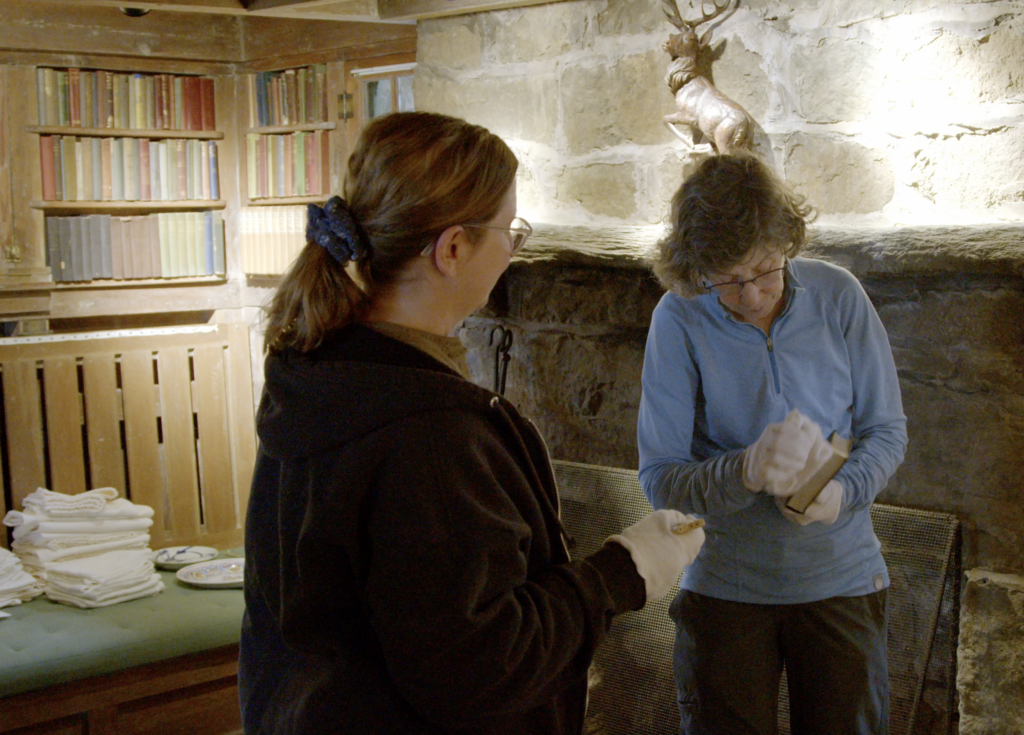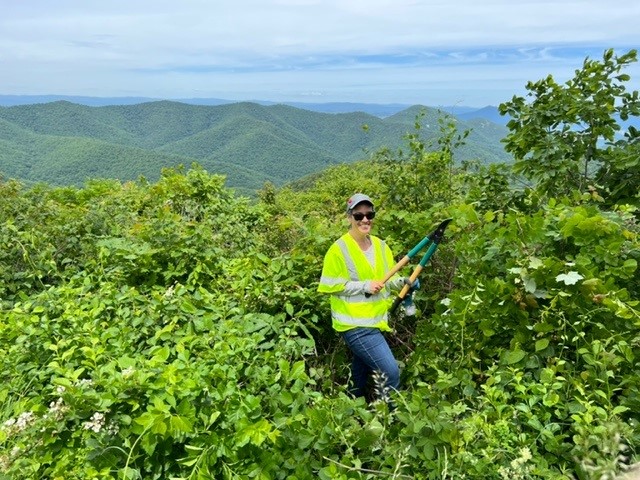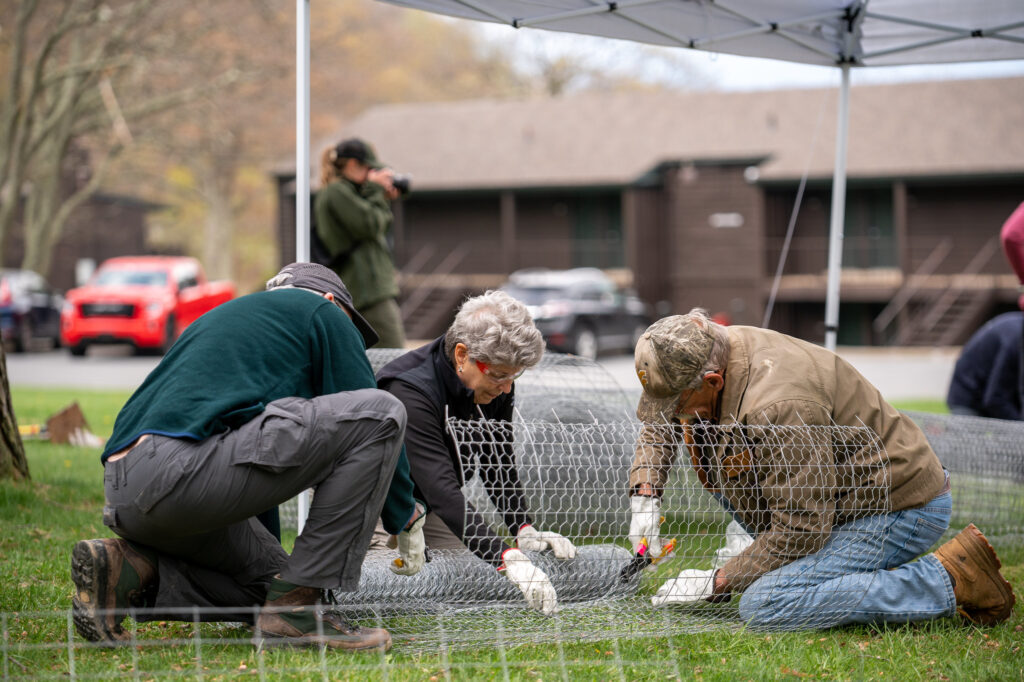Our Events & Volunteer Coordinator, Kelly Berrang, retired on August 30th. Over the course of six years with the Trust, Kelly saw our organization through some tough transitions, from new office spaces to COVID19, a new Executive Director, and three SNP Superintendents.
Kelly is well known for her warmth and openness, and we also know her to be honest, adaptable, and dedicated. Not only was she integral to growing Banff into a $100,000+ annual fundraiser and making all our other events the meaningful experiences they are, she also developed a structure for our volunteer program and mobilized our generous volunteers for planning, community events, office needs, and more.
In Kelly’s last month at SNPT, our Communications Manager, Ember, interviewed her to capture her thoughts about the six years she spent here at the Trust. Below is the transcript from that interview (trust us, it’s worth the read).
Ember: Alright, one month left with the Trust! How many years have you been with SNPT?
Kelly: Six and a half.
Ember: Nice! Getting right down to it: what’s a memory that just sticks out at like top of the list? A highlight moment.
Kelly: I think anytime we have had the opportunity to meet people. I love board meetings, believe it or not. I love the opportunity to visit and get to know the people that serve on our board. So board meetings and donor engagement opportunities as a whole – I just love the conversations that we get to have with people and learning their stories.
Those opportunities to really engage with people outside of this office and learning why the park is special to them and their stories and what brought them to us. So that’s a highlight for sure. We have some special people on our corner.
We work hard in the office – heads down doing our jobs. And we’re all so different and have such different things that we bring to the table; I just value the relationships that we have here within the office as well. And I admire everybody and their dedication to what we do. So, that’s definitely a highlight as well. So, it’s the people.
Fundraising, Relationships, and Adaptability through Change
Ember: More of a personal question as a follow up: with the nonprofit fundraising sector being so relationship-based, and with your love of people, how do you bring your whole self to this fundraising setting without worrying about the risk of alienating anyone with differing opinions?
Kelly: Well, that’s an interesting question because I think it is an aspect that is important to what we’re doing here. I think we all have common ground in what we’re doing, you know, the project or the initiative, whether it’s with the board or donors or volunteers, and finding that common ground really keeps the focus on the work.
I’m also, you know, I’m an open book, so to speak, so I don’t edit myself a whole lot, but I find that we have such caring people. They show an interest. And we do have some people that have been with us for a long time so that the natural organic process when you’re having a conversation, getting to know someone, you kind of know where the common ground already is.
Ember: So which leads me to another one of my questions in the vein of people and long-standing relationships, because it’s not as if you can put your donor and volunteer and relationships in a procedure document and hand them to your successor: How do you navigate retiring – leaving a position that’s so relationally oriented?
Kelly: You know, I don’t have an answer for that yet.
I think that’s going to be the hardest part of stepping away on August 30th. I feel like, because of the nature of what we do here and the relationship building, you invest a lot of yourself in that. So I don’t know yet. I don’t have to have any decisions made yet, and that’s a luxury, but I think it will be a little bit of a hole in my heart.
I will definitely keep in touch, and I’ll have complete interest in how things move forward, and for each of you personally, too. But I can imagine myself volunteering and being involved in something, because that’s one thing I’ve appreciated so much about this job: that it is mission driven. There’s so much heart in it, and I can’t imagine not having an outlet for that. It’s how I’m made.
Ember: Is that part of what drew you to the Trust in the first place, the mission orientation?
Kelly: Oh, for sure. Yeah. Well, I specifically was looking for something in the non-profit area. I had done some work already in non-profit, so I knew it was something that was really gratifying and fulfilling and so satisfying. I think the unique aspect of it is that you’re not just working a number of hours and getting a paycheck at the end of your pay period. You’re that mission driven person.
Purpose is just very fulfilling. And I guess when I was looking for this for a job prior to getting this job, that just made all the sense in the world to me at that point in my life.
Ember: That’s actually a great segue, because when you started here your job title was very different and your job responsibilities were very different.
Can you talk me through the evolution of your position with the Trust?
Kelly: So the job was a 15 hour week job for the prior Executive Director, Susan Sherman. She needed somebody to help organize her and help her with their emails and scheduling and stuff.
She’d never had an assistant and I’d never been one, but so we kind of figured it out together and it just evolved.
Part of it was just helping her get some organization in her daily work, then I was moving into helping her with setting up appointments with trustees or donors or things like that, which then totally opened up what I was doing and those relationships kept evolving into being able to meet so many different people in the organization.
And that was really fun. And then we moved to this office and it became apparent that there was just more that was needed from me. And I think Susan realized I could move into that more. So I was basically the office manager, and that came with different roles with helping to onboard people, helping with board meetings, event set up and organization and stuff like that. Susan was able to relinquish some of that to me and rely on me in different ways to support her and the office itself.
And then Jessica came on and she brought in the role even more, and that became the board liaison position. Which I thoroughly enjoyed. But she needed somebody who could dedicate more time, and I wasn’t ready to go full time then.
I was still wanting to stay at 25 hours a week or so.
So then Chelsea came in and sort of took on that board liaison role, and this is where Jessica’s just so great at what she’s doing, being open to and sort of getting the lay of the land in terms of staff and skill sets. I said, “Well, gosh, you know, I can see we’re ramping up with events. Is there a place for me there?” And she said, absolutely! So that is when I moved into the event support and then became part of Anna’s team.
And then of course the volunteer management piece of that, which was a natural fit because in events we do utilize those volunteers extensively.
The Banff Film Festival
Ember: So let’s talk about Banff. You’ve been here for six years. Just in the three years that I’ve been around Banff, it seems like it’s like exponentially grown. How has that event become everything that it is?
Kelly: Well, I think there again is that vision that Jessica’s so good at. I think for a few years there, we didn’t have capacity to grow it, quite frankly.
And then it was sort of the notion, well, can we grow it? How do we grow it? You know, there’s only been so many seats in that theater, right? So Jessica put the task to us to figure out how we could grow this event increase revenue opportunities. And so and that’s what we did.
It took a lot of digging in and asking for sponsors and raffles and stuff like that. It’s sticking your neck out and asking for the support. The good news is that it is such an established popular event, so we had legs to stand on to grow it.
And then our team has just found ways to move the needle and get creative.
It’s kind of all fuzzy, you know, how it grew, but it’s exciting because now we have the staff in place to grow it and to make it even more impactful. So it’s been exciting and I’ll miss in some ways, you know, the 10 year anniversary and what that looks like next year.
I’ll be watching, believe me. It’s pretty impressive for this little group, but you know, when you think about how it has grown and the support we have from donors and followers and the community, I just see it having the potential to be even bigger than it is right now.
So yeah. We’re lucky. I mean, when I think back to the opportunity that was given to us by Steve Nauss and everybody who brought Banff to us a decade ago, I mean, that’s huge. It really is. So we were very fortunate and we were smart enough to take advantage of it and make it our biggest fundraiser of the year.
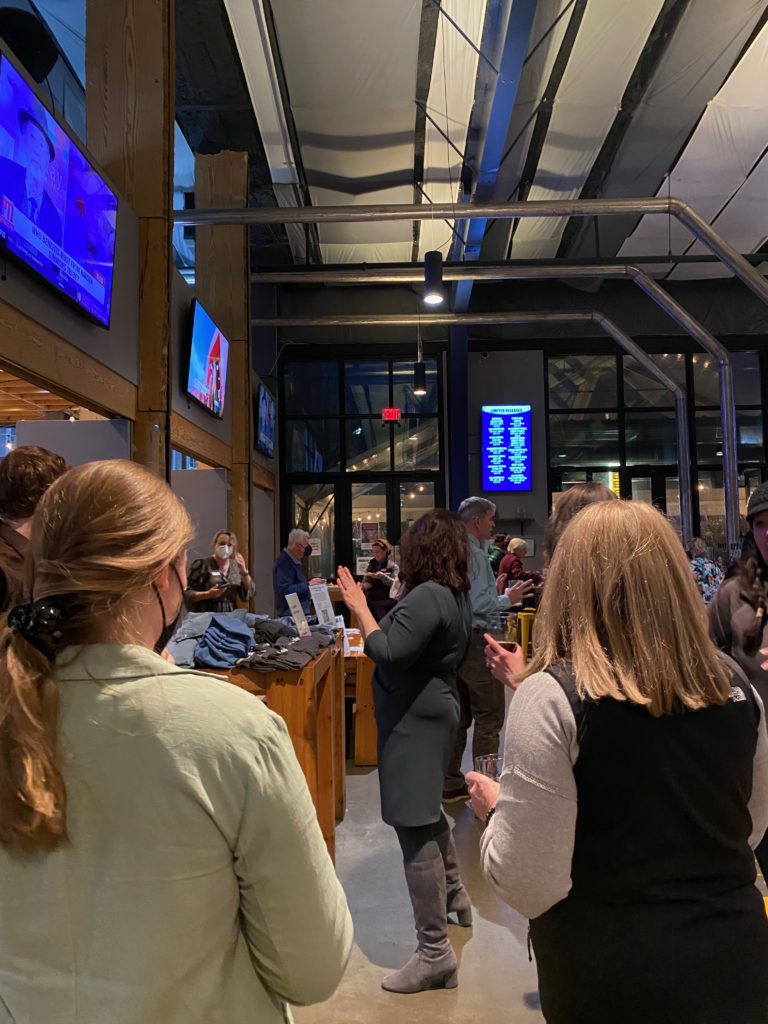

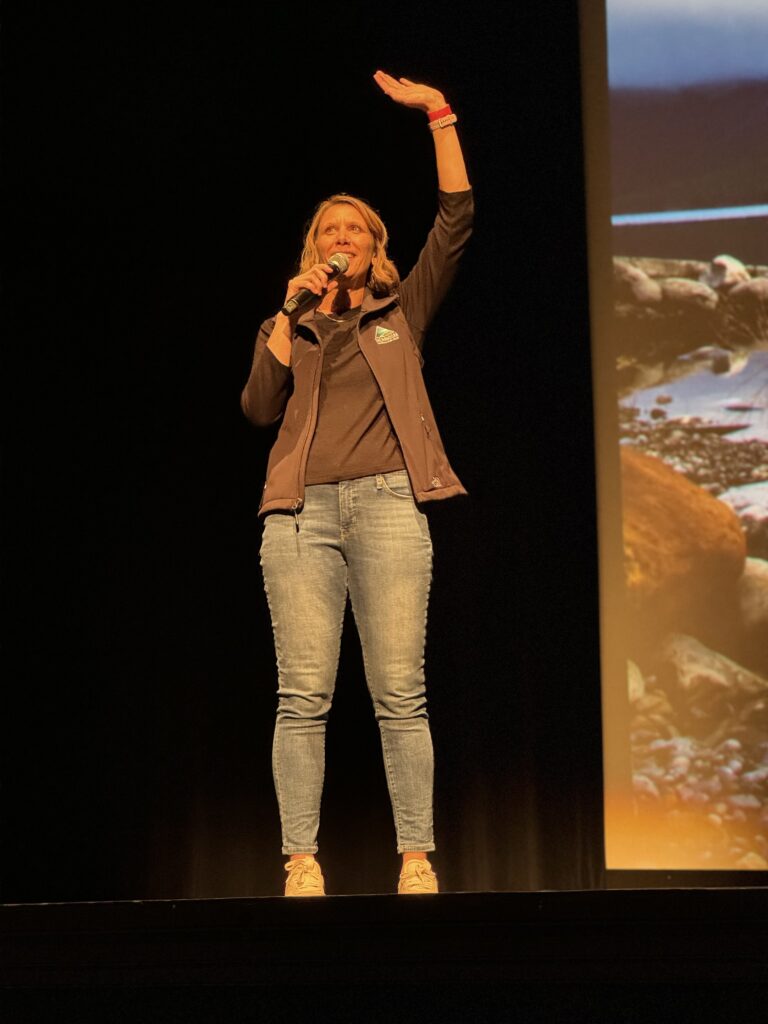
Growth & Struggles
Ember: Okay, switching gears a little bit. I’d love to hear about growth and/or struggling points in your role and how you worked through that.
Kelly: Hmm. Yes. You know, those, leadership changes are always a challenge, but, again, Jessica’s smart and it was obvious early on that she had a vision and so it was easy to buy into it. A struggle in the day-to-day for sure to make it all work. And we had just come off the pandemic, so that period of time when we were in the pandemic and dealing with personal struggles, we were kind of rudderless there for a while, which a lot of organizations were. It was not unique to ours, and it wasn’t anything endemic to this office.
We had also just brought on two new staff right at the beginning of the pandemic, so getting through that was challenging. And then, of course, right after that, Susan decided to step away. So that was a little bit daunting.
Just keeping our head above water there for a little while was interesting. But going back to the people, this has always been a very supportive and collaborative office, and I never felt like I didn’t have support. There was always a sense of we’re in it together and that we were going to get through it.
So then Susan stepped away and Jessica came on. But like I said, organizationally, she was so smart and she just kind of pulled us back. We went bare bones from scratch again. And we’re still were using the things that were so important to the foundation of who we are.
But she looked at the strengths and the weaknesses and where we could go from here and how we grow the organization.
So, lots of changes, but it was easy to see where she was going with it and feel confident and trust the process.
Ember: Were there any other points in your six years at the Trust where, you felt like you hit a wall or there was just something that was sitting in your way?
Kelly: Well, you know, when Anna had to step away for a while last year, that was hard. And it is what it is, circumstances happen, but because we are small and we are so integral, we work so closely together in different aspects. So it’s hard when one person leaves, and we were ramping up for our first Art in the Park, so you kind of feel like you take two steps forward and you have to take a step back. So that that was a challenge for all of us, I think. But again, I’m going to sound like a broken record: we all stepped up. Everybody stepped up, and I think that’s a testament to this group and what we’re doing for the Trust, what we’re doing for one another.
And I think it’s so much of what makes this office successful: that collaboration and that supportive environment. And I don’t see that changing. I think we all care about what we’re doing and who we’re doing it with.
Ember: What would you say are 1-3 things or muscles that you’ve built or grown through this position?
Kelly: Well, may sound silly, but I had to learn new skills. So it’s humbling to learn new things, new ways to work, new people to work with.
It was very humbling during the pandemic, but it’s also very fulfilling to be taken outside your comfort zone, but then have the tools to make it work.
Another one might be, you know, when we’re out there talking to people and representing this group and being diplomatic and always be thinking about what’s in the best interest of this organization. Like, I think learning how to work with the federal agency, having patience and seeing the long view, learning to see the long view. You know, I’m a ‘I want results right now’ kind of person, so that has been interesting for all of us as an organization, to take the long view and be patient.
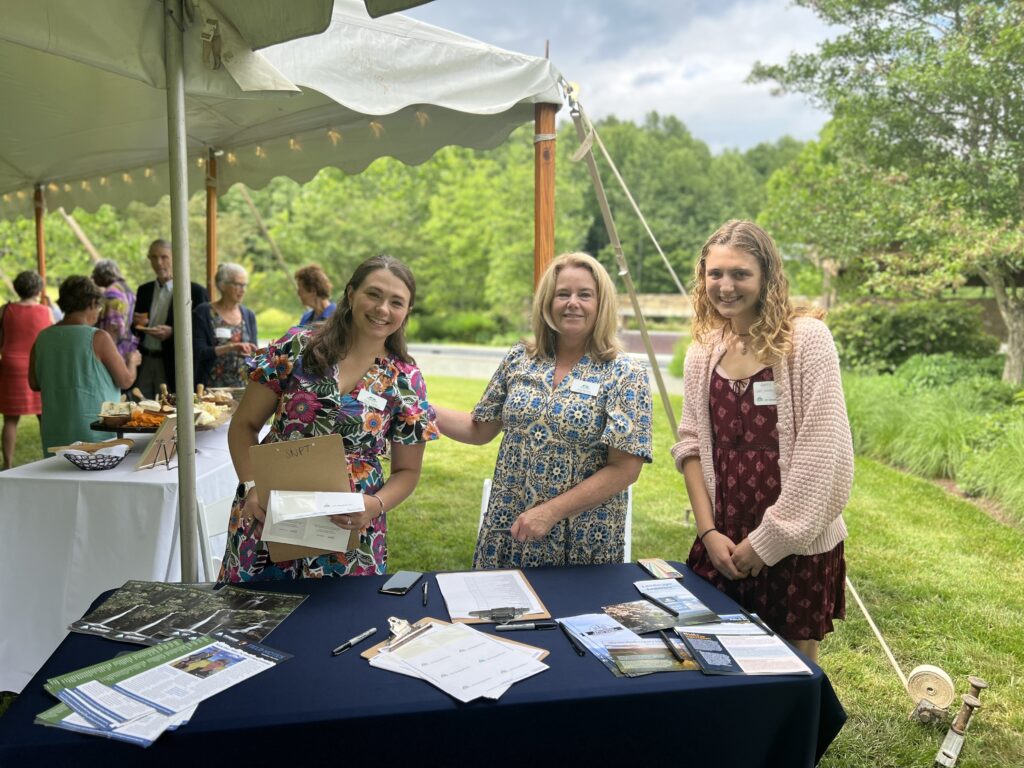
Kelly (center) with Emily Chiles (left) and intern Abbey Murray (right) at the 2024 Shenandoah Soirée.
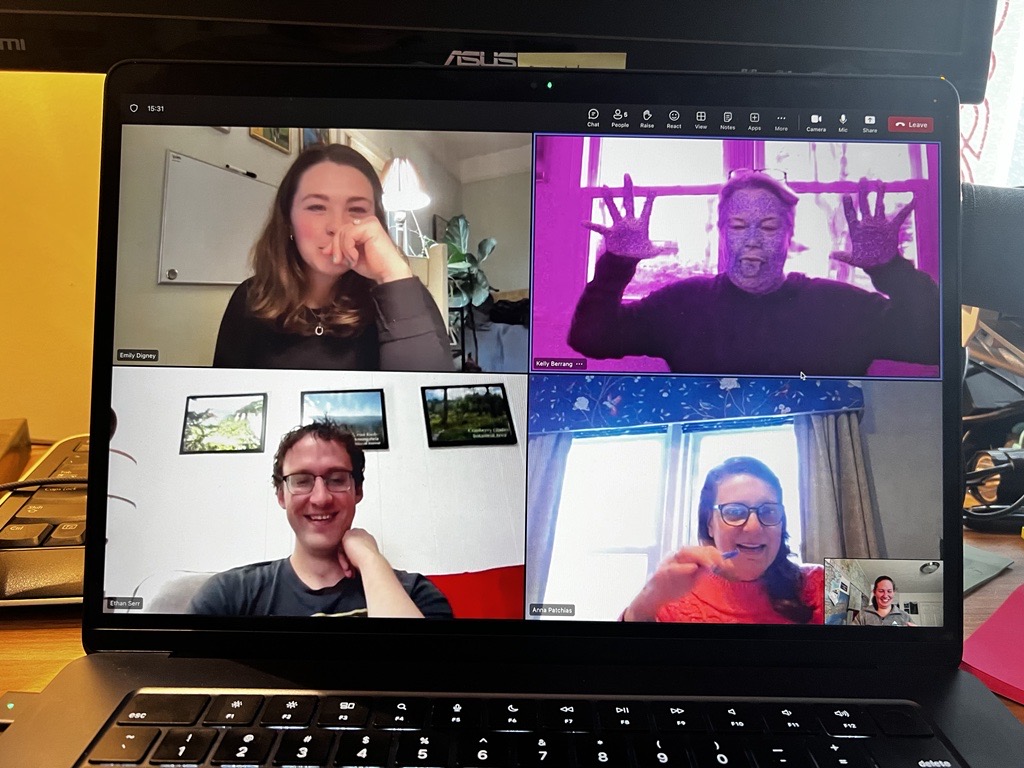
Kelly (top right) embraced the quirks of Microsoft Teams wholeheartedly.
Volunteers
Ember: Okay, let’s talk about volunteers. I’ve been thinking about this a lot lately, because a lot goes into building a volunteer force and training a volunteer force. But the payoff is so high. I remember when you first took on the volunteer program, you were not excited to add more to your plate.
So, when you took on working with volunteers, what were your thoughts? And how have those thoughts changed?
Kelly: Well, I think it felt like it’s so unwieldy, the nature of the volunteers that come to us and how we’re using them, right? I mean, it’s a little complicated because there’s the park component, there’s our events, there’s, you know, just so many different moving parts and how we use them. So I think my apprehension was the unwieldiness and trying to provide some structure for it and see some organization to it and build that out.
And now, I kind regret that I won’t be able to see some of my thoughts and vision for where it would go come to fruition. I have no doubt that somebody else can come in and take that on and make it grow because we have amazing volunteers. Just the people that come to us and their interest in what we do, their interest in the park, they’re just so very giving and generous of their times and their talents and their enthusiasm. When you have that to work with, you can’t go wrong.
I think a bigger part of that unwieldiness is the notion of being worthy of them offering that time, their time and talents, right? I never wanted to waste their time. I never wanted them to feel that I didn’t appreciate them offering their time and talents.
So that, if anything, is the struggle of managing volunteers: being worthy of that. You know, everybody’s time is precious. And when somebody gives it to you, shares it with you, with no expectation or return on that, you want to make the most of that.
Our volunteers tackle a variety of projects, from park maintenance and preservation to office tasks and event planning & facilitation.
Passing the Torch
Ember: Okay. Two more questions, unless we go down some other rabbit hole. What are you looking forward to in retirement? What are you going to do with that precious time?
Kelly: Oh, I don’t know. I have things that I’ve put on hold, you know, projects and traveling. Michael and I have some travel plans. Well, we have a long list of ideas. So, some of that and spending time with our grandchildren. I have parents that need my support, and that need is going to increase, and I’m grateful that I’ll have a little more time to do that.
So family, some projects, some travel, some volunteering. It’s going to be an interesting phase of life.
Ember: I love that. And last question: as you leave, now that it’s not your responsibility to make things happen, what are your hopes for the Trust in the next however many years?
What do you want for us?
Kelly: Gosh, that’s a big one. This organization is special to me and, while it may not be what you want out of it or anybody else here, I hope that it grows and continues to have this feeling that’s in this office and what you all share here. That dedication to what the organization stands for each day and the work that you do together and the support that you can give to one another.
I hope that continues because it’s been so important to me. And so I hope that for y’all’s sake, that it continues to be that.
And there are so many interesting ways that the organization is impacting the park now, like Beth’s new project, the Good Neighbors program. It’s exciting to see those new ways to impact and support the park.
And I look forward to seeing that those creative, inventive ways to support the park and the staff there.
Ember: That did actually trigger one last question: what would be the number one thing that you would tell whoever’s going to step into your position? The number one piece of advice that you would give them?
Kelly: Be open. Be nimble. You have to learn to pivot here a lot. And go to the park. Be in the park. And when you’re driving to a board meeting, pull off at that overlook, get out of your car and look out there.
I’ve said this to a couple of our colleagues here in the office: look up and look around. We’re busy, we’re working hard, but to remember why it’s worth the headaches and the challenges and the need to pivot and be nimble and humble, you have to take the time to just look at that beautiful park and let it remind you why we do what we do.
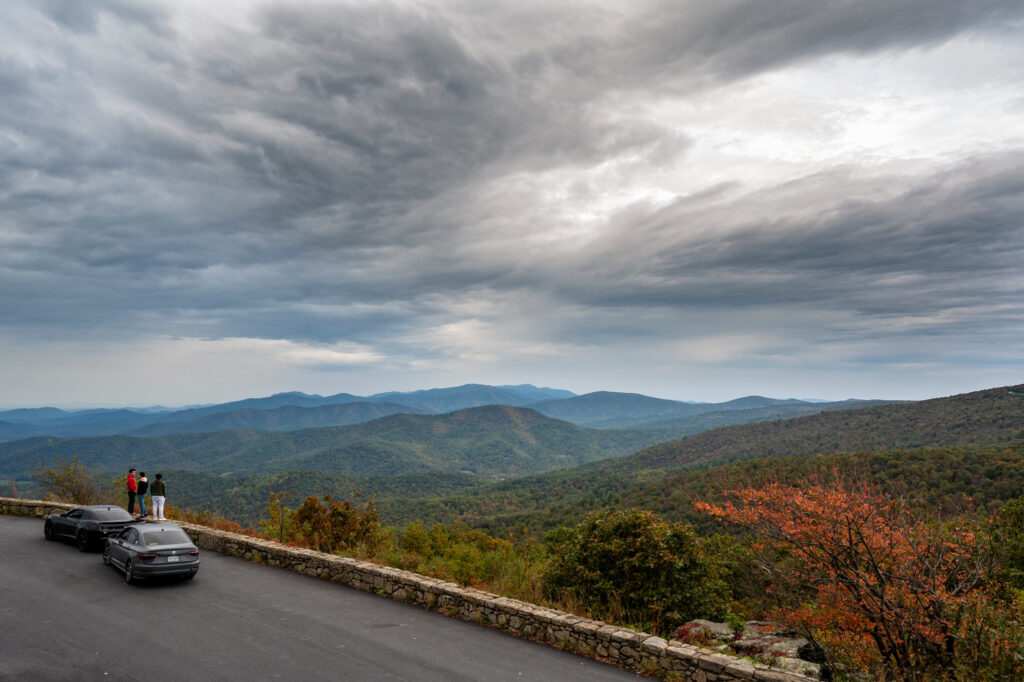
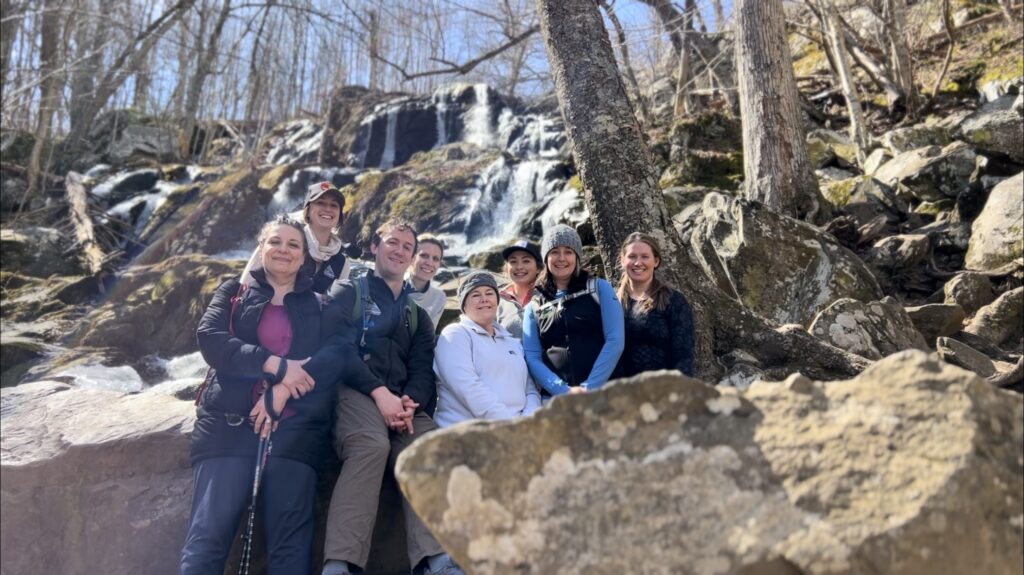
The SNPT Staff on a winter hike to Dark Hollow Falls in 2024.
